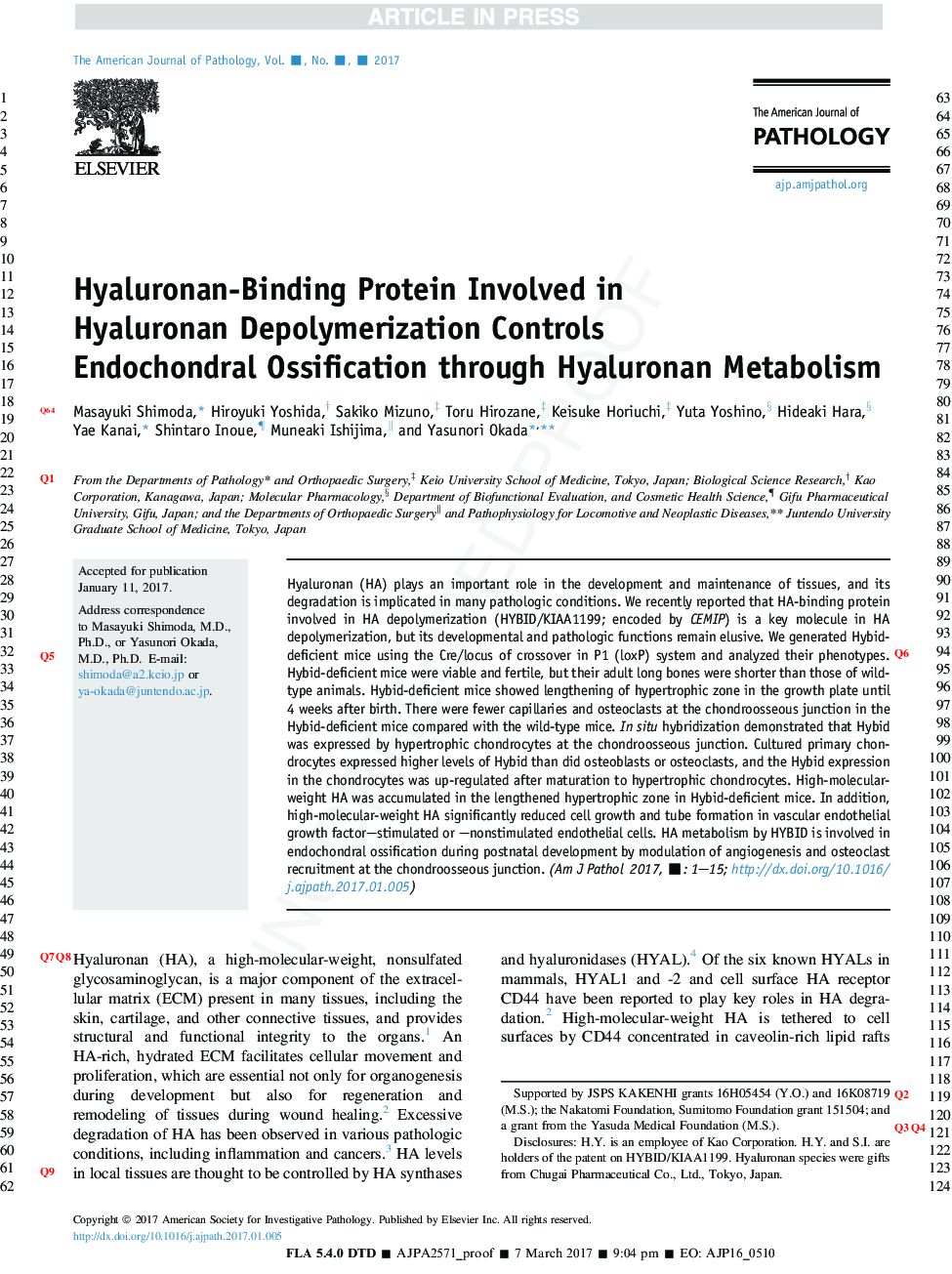| Article ID | Journal | Published Year | Pages | File Type |
|---|---|---|---|---|
| 5596117 | The American Journal of Pathology | 2017 | 15 Pages |
Abstract
Hyaluronan (HA) plays an important role in the development and maintenance of tissues, and its degradation is implicated in many pathologic conditions. We recently reported that HA-binding protein involved in HA depolymerization (CEMIP; alias HYBID/KIAA1199) is a key molecule in HA depolymerization, but its developmental and pathologic functions remain elusive. We generated Hybid-deficient mice using the Cre/locus of crossover in P1 (loxP) system and analyzed their phenotypes. Hybid-deficient mice were viable and fertile, but their adult long bones were shorter than those of wild-type animals. Hybid-deficient mice showed lengthening of hypertrophic zone in the growth plate until 4 weeks after birth. There were fewer capillaries and osteoclasts at the chondroosseous junction in the Hybid-deficient mice compared with the wild-type mice. In situ hybridization demonstrated that Hybid was expressed by hypertrophic chondrocytes at the chondroosseous junction. Cultured primary chondrocytes expressed higher levels of Hybid than did osteoblasts or osteoclasts, and the Hybid expression in the chondrocytes was up-regulated after maturation to hypertrophic chondrocytes. High-molecular-weight HA was accumulated in the lengthened hypertrophic zone in Hybid-deficient mice. In addition, high-molecular-weight HA significantly reduced cell growth and tube formation in vascular endothelial growth factor-stimulated or -nonstimulated endothelial cells. HA metabolism by HYBID is involved in endochondral ossification during postnatal development by modulation of angiogenesis and osteoclast recruitment at the chondroosseous junction.
Related Topics
Health Sciences
Medicine and Dentistry
Cardiology and Cardiovascular Medicine
Authors
Masayuki Shimoda, Hiroyuki Yoshida, Sakiko Mizuno, Toru Hirozane, Keisuke Horiuchi, Yuta Yoshino, Hideaki Hara, Yae Kanai, Shintaro Inoue, Muneaki Ishijima, Yasunori Okada,
